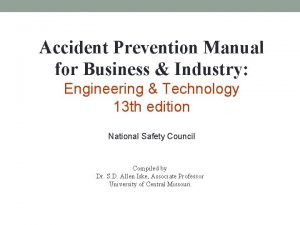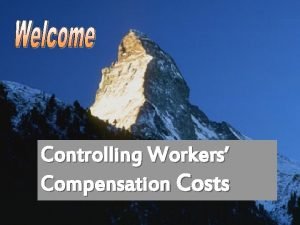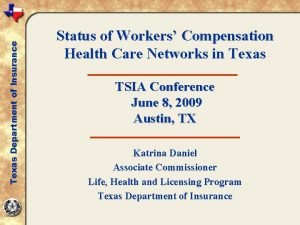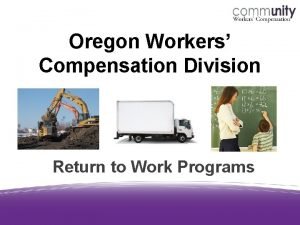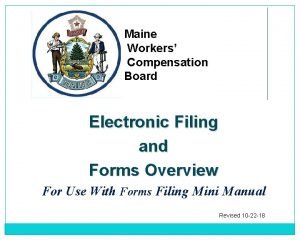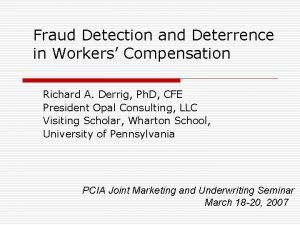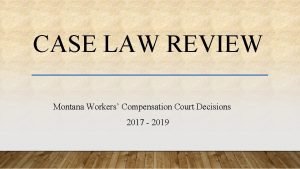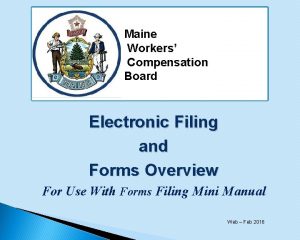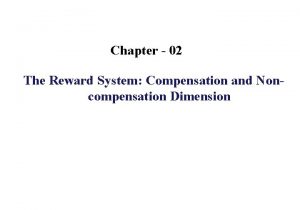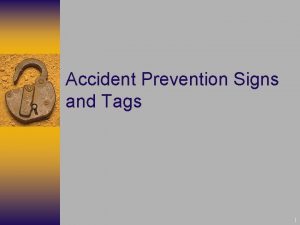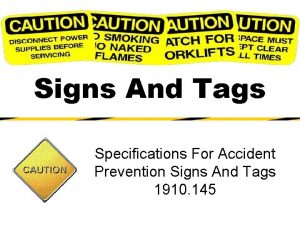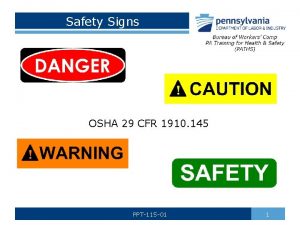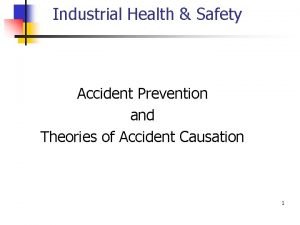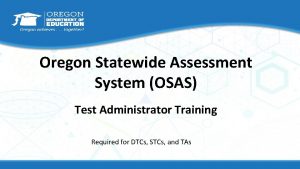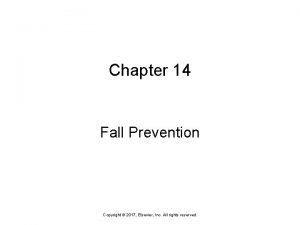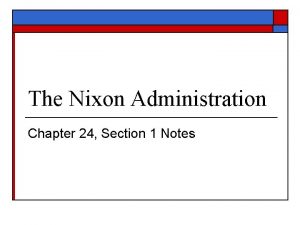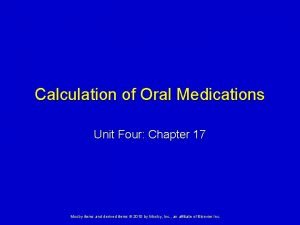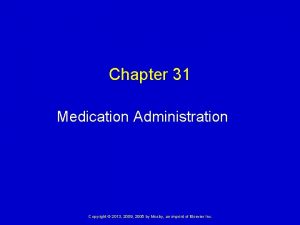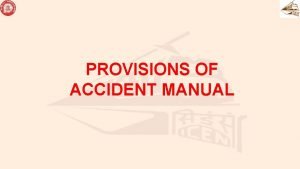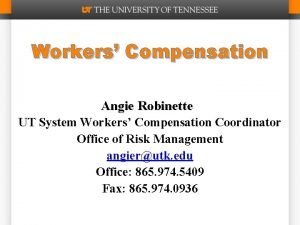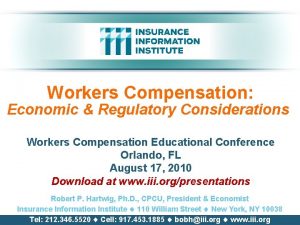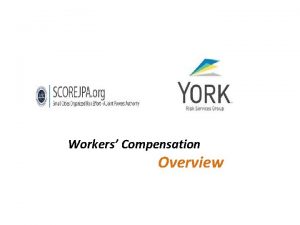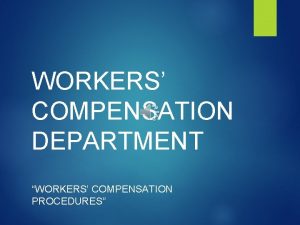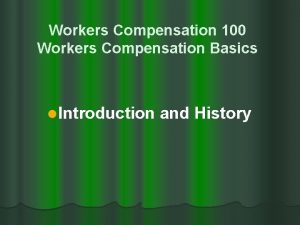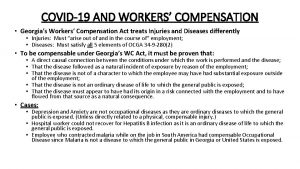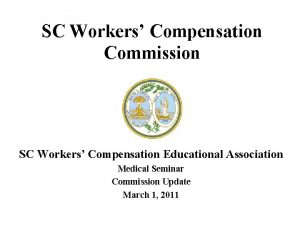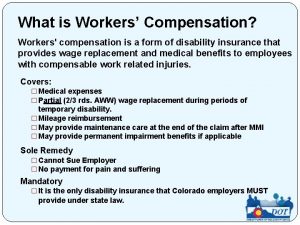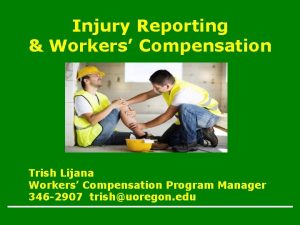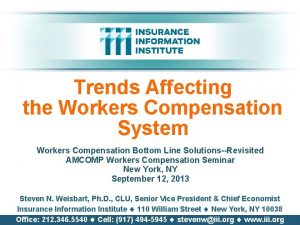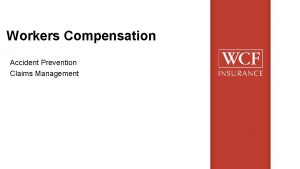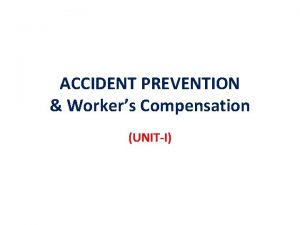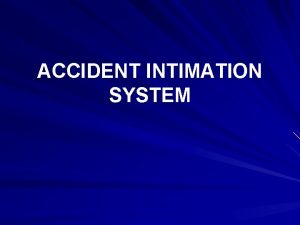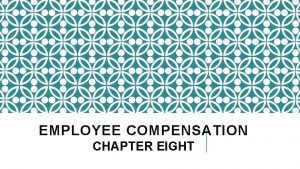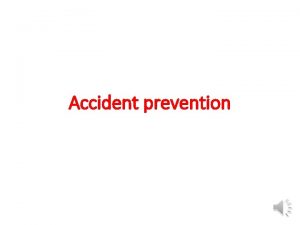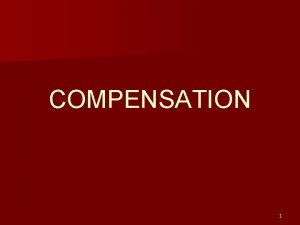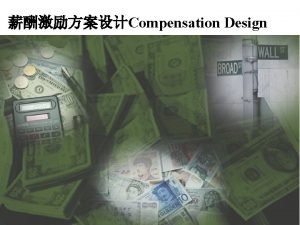Workers Compensation Chapter 7 Accident Prevention Manual Administration




































- Slides: 36

Workers Compensation Chapter 7 Accident Prevention Manual: Administration & Programs

The System n To ensure that losses from workplace injury are compensated. n A “safety net” to alleviate the problems that workplace injuries can cause, while providing employers some relative predictability of the costs. n In return for the protection, workers cannot sue their employer for their injury.

Economic Losses n 1. Loss of earnings. n 2. Additional expenses. n Death- worker’s survivors would be compensated for their providers loss. n Total and Permanent Disability- may be even greater costs than a death.

WC in the United States n Early interest in the German (1893) and British systems (1897). n 1902 - Maryland “Cooperative Accident Insurance Fund”. n 1908 - FDR pushed for, and got compensation for Federal employees.

Early Laws n 1909 - Montana law for miners and laborers in coal. Declared unconstitutional, but got other states thinking about compensation for workers. n 1910 - New York for certain hazardous jobs. n None of the early laws included occupational disease- “injury by accident”.

Early Laws n Every state (except Oregon) required waiting periods of one to two weeks before benefits were paid. Some provided retroactive payments after a prescribed period. n 1911 - Wisconsin WC law was the first to remain effective and was soon followed by Nevada, New Jersey, California and Washington.

Early Laws n 1916 - the United States Supreme Court declared workers compensation laws to be constitutional. n Workers compensation was not provided in every state until Mississippi enacted its first law in 1948.

Compensation Legislation n All 50 states, DC, Guam and Puerto Rico, plus Federal Employees Compensation Act (FECA) and the Longshoreman’s and Harbor Workers Act. n While there have been increases in benefits and scope, the basic concepts have remained unchanged.

Objectives of WC n Six basic objectives- Page 151. n Income Replacement. n Medical and vocational rehabilitation. n Incentives for both the company and injured persons to get back to work ASAP. n Accident prevention and Reduction?

Major Characteristics n Compulsory n Elective n If you reject the act you would lose the “common law” defenses: – Assumption of risk – Negligence of fellow employees – Contributory negligence

Major Characteristics n Most jurisdictions require employers to obtain insurance or prove financial ability to carry their own risk. n “Self-Insurers” n Some states (13) permit employers to purchase insurance from either a competitive state fund or from a private insurance company.

Covered Employment n Many laws exempt employers having fewer than a specified number of employees-usually 3 or 4 in any one location. n Other exemptions. n Federal Employer’s Liability Act.

Limitations on Coverage n Each state act was the result of political compromise. n These laws would introduce greater certainty into the calculation and payment of benefits- in contrast to the common law system: – Could sue under common law – If you lost, you got zero

Limitations of Coverage n Two factors usually prompt compensation litigation: n 1. Work relatedness- did the injury arise out of the course of employment? n 2. Extent of the disability.

“Exclusive Remedy” n “Quid Pro Quo”- employers accept the responsibility for injuries without regard to fault. n In exchange, employees give up the right to sue for unlimited damages. n However, workers may bring suit for negligent actions on their employer, fellow workers, contractor, entity or other individual.

Broadening Exclusive Remedy n The expansion of Dual Capacity Doctrine- if the injury was caused by the employers product or a service available to the public. n Intentional Tort.

Covered Injuries n “Arising out of and in the course of employment. n Four Tests: – Personal injury – By accident – Arising out of – In the course of

Occupational Disease Originally not part of WC. n Most states do not provide for “ordinary diseases of life”. - See 1996 Virginia State Supreme Court ruling on page 154. n Compensation for Occupational Disease is the same, however, some states do not provide permanent partial disability for certain diseases. n Most states have extended periods for reporting latent, slowly developing diseases. n

Work Related Impairment n Hearing n Black Lung Disease

Work Related Impairment n “In the course of employment” – means from the time they step on the employer’s premises until the time they leave it. n Not easy to define. What is meant by premises? n “Arising out of” – causal relationship between the employment and the injury. (ie, heart attack)

Work Related Impairment n Actual Risk Doctrine- the hazard resulting in injury be a risk of the particular employment regardless of whether it is a risk to which the general public is exposed. n Positional Risk Doctrine- the “but for” test. The employment places the worker in a position where he/she is injured.

Benefits n TYPES: Loss income, medical payments and rehabilitation. n 70% for “temporary total disability” n Only 25% of such cases were for cash benefits paid. n Benefits for “permanent partial disabilities” accounted for 66% of the total dollar amount.

Benefits n Benefits are payable as a wagerelated benefit. n Varies by state. Between 66% and 100% of current wages. n Some can get less than two-thirds of their pay because of ceilings. n Tax free.

Benefits n Maximum time periods for receiving benefits. n Waiting period, usually 3 -7 daysapplies to only cash indemnity payments. n Retroactive payment varies from state to state.

Benefits n Will vary depending on whether the disability is temporary or permanent, partial or fatal. n Dollar ceilings may mean individuals are not fully compensated for lost earnings. n Permanent total disability- prevent any work in the labor market and are of an indefinite duration.

Benefits n Permanent Partial Disabilitycalculated on a relatively complex basis: – Scheduled Injuries • % of average weekly wages • Paid for fixed period • Vary according to type and severity – Non-scheduled injuries • General nature, back and head injuries

Benefits n Death benefits: – Income replacement for families – Burial benefits

Medical Benefits n Compromise 1/3 benefits: – First Aid – Physician services – Surgical and hospital services – Nursing and drugs – Prosthetic devices

Medical Benefits n Medical benefits required in all states n ½ States have the right to choose physician. n Social Security benefits. n Private Disability Insurance

Rehabilitation n One of the primary objectives of WC. n Restore workers to fullest economic capacity. n Benefits are paid (sometimes in addition) for training, education, testing and services to get the injured back to work. n Federal Vocational Rehabilitation Act

Administration n State agencies handle cases and ensure that all parties comply with the law. n Worker rights under the law.

Handling Cases n Uncontested – Direct Payment – Agreement System n Contested Cases: – Hearing by referee or hearing officer. – Appeals.

Rehabilitation n Medical Rehabilitation: – Treat the impairment and restore lost function. – Medical care. n Vocational Rehabilitation: – Prepare for new occupation or continuing in an old one. – Retraining.

Degree of Disability n Temporary Total and Partial Disability. n Permanent Partial Disability: – Whole Person Theory – Wage Loss Theory – Loss of Wage Earning Capacity Theory – Combinations

Degree of Disability n Permanent Total Disability. n Insurance Incentives. n Safety Incentives.

Managing a WC Program n Hiring n First Report of Accident n Doctors and Medical Institutions n Rehabilitation n Follow-up
 Primary prevention secondary prevention tertiary prevention
Primary prevention secondary prevention tertiary prevention Accident prevention manual
Accident prevention manual Controlling workers compensation costs
Controlling workers compensation costs Texas hcn workers compensation
Texas hcn workers compensation Oregon workers compensation division
Oregon workers compensation division Maine workers compensation forms
Maine workers compensation forms Workers compensation fraud detection
Workers compensation fraud detection Montana workers compensation court
Montana workers compensation court Work comp puncture
Work comp puncture Maine workers compensation forms
Maine workers compensation forms Noncompensation
Noncompensation Accident prevention tags meaning
Accident prevention tags meaning Accident prevention sign and symbols
Accident prevention sign and symbols Ppt-115
Ppt-115 The human factor theory
The human factor theory Job classification
Job classification Altar workers
Altar workers Osas testing manual
Osas testing manual Tainted grail chapter 3
Tainted grail chapter 3 Glencoe health chapter 5 mental and emotional problems
Glencoe health chapter 5 mental and emotional problems Puncture resistant container
Puncture resistant container Chapter 26 infectious disease prevention and control
Chapter 26 infectious disease prevention and control Chapter 19 disease transmission and infection prevention
Chapter 19 disease transmission and infection prevention Chapter 19 disease transmission and infection prevention
Chapter 19 disease transmission and infection prevention Chapter 14 fall prevention
Chapter 14 fall prevention Chapter 16 infection prevention and control
Chapter 16 infection prevention and control Define infection prevention chapter 5
Define infection prevention chapter 5 Chapter 24 section 1: the nixon administration answers
Chapter 24 section 1: the nixon administration answers Chapter 32 section 1 the nixon administration
Chapter 32 section 1 the nixon administration Chapter 32 section 1 the nixon administration
Chapter 32 section 1 the nixon administration Linux operation and administration chapter 8
Linux operation and administration chapter 8 Chapter 24 section 1 the nixon administration
Chapter 24 section 1 the nixon administration Chapter 7 urban administration question answer
Chapter 7 urban administration question answer Chapter 17 dosage calculation and medication administration
Chapter 17 dosage calculation and medication administration Chapter 31 medication administration
Chapter 31 medication administration Public administration chapter 1
Public administration chapter 1 Historic site
Historic site

